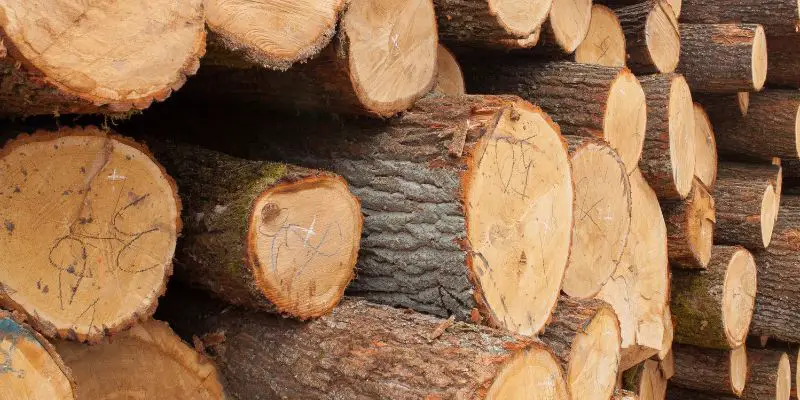To tell if wood is dry enough for woodworking, use a moisture meter to check the moisture content. Ensure the reading is consistent throughout the wood to prevent warping or cracking during the woodworking process.
Dry wood is essential for successful woodworking projects, as it is less likely to shrink or change shape over time. Properly dried wood also ensures that the finish will adhere properly, resulting in a high-quality final product. Before starting any woodworking project, it’s crucial to confirm the dryness of the wood to avoid potential issues and to achieve the best results.
Testing the moisture content is a simple yet essential step in the woodworking process.
Importance Of Dry Wood In Woodworking
When it comes to woodworking, dry wood plays a crucial role in determining the quality and longevity of the finished product. Utilizing properly dried wood is essential to ensure the durability and stability of the woodworking project. In addition to this, the moisture content of the wood can significantly affect the woodworking process, making it essential for woodworkers to be able to identify whether the wood is dry enough for use.
Impact On Durability And Stability
Dry wood is vital for the durability and stability of woodworking projects. When the moisture content of wood is high, it is more likely to warp, crack, or shrink over time, leading to a less durable and stable end product. Moisture causes wood to expand and contract, and when used in projects without thorough drying, this natural movement can compromise the structural integrity of the piece.
Effects On Woodworking Process
The moisture content of wood directly impacts the woodworking process. Wet wood is more challenging to work with as it is prone to tear-out, difficulty in cutting, and is generally harder to shape and manipulate. Furthermore, working with wet wood can lead to issues such as glue joints failing to hold and finishes not adhering properly. These problems can significantly affect the overall quality and appearance of the final woodworking project.

Visual Inspection Of Wood Dryness
Visual inspection is a crucial step in determining the dryness of wood for woodworking. By carefully observing the physical characteristics of the wood, you can assess its readiness for your woodworking project. Here’s how you can visually inspect wood dryness before diving into your next woodworking venture.
Checking Cracks And Checks
One of the first things to look for when visually inspecting wood for dryness is the presence of cracks and checks. Cracks are splits that occur along the grain of the wood, while checks are small, shallow cracks that may form on the surface. Freshly cut wood or wood with a high moisture content is more prone to these imperfections. Dry wood, on the other hand, is less likely to exhibit new cracks or checks. Prioritize using wood with minimal cracks and checks to ensure the structural integrity of your woodworking project.
Understanding Color And Texture
Color and texture can also provide valuable insights into the dryness of wood. When wood is freshly cut or has a high moisture content, it tends to have a darker, more saturated color. As it dries, the color gradually lightens, eventually reaching a dull, grayish tone. Moreover, the texture of dry wood is relatively smoother compared to that of wet or freshly cut wood, which may feel rough or damp to the touch.
Moisture Content Testing Methods
Moisture content is a critical factor when it comes to woodworking, as using wood that is not adequately dry can lead to warping, cracking, and other issues in your finished products. There are several moisture content testing methods that woodworkers use to ensure the wood is dry enough for woodworking projects. In this post, we will explore two common methods: Using Moisture Meters and Measuring Weight Changes.
Using Moisture Meters
One of the most popular and accurate methods for testing wood moisture content is using moisture meters. These handheld devices measure the electrical conductivity or capacitance of the wood to determine its moisture levels. There are two primary types of moisture meters: pin meters and pinless meters.
Measuring Weight Changes
Another method for assessing wood moisture content is by measuring weight changes. This method involves weighing a small sample of wood and then drying it in an oven to evaporate the moisture. After the wood is completely dry, it is weighed again, and the weight difference is used to calculate the moisture content.
By using these moisture content testing methods, woodworkers can ensure that the wood they are using for their projects is adequately dried, reducing the risk of issues down the line.
Physical Properties Examination
When it comes to woodworking, determining the moisture content of wood is crucial in ensuring the quality and durability of the finished product. One way to assess the dryness of wood is through a physical properties examination, which involves evaluating the wood’s characteristics through various observations and tests. By understanding these physical properties, woodworkers can determine if the wood is dry enough for use in their projects.
Tapping And Listening For Resonance
One simple method to assess the dryness of wood is by tapping it and listening for the resonance. When wood is dry, it produces a clear, crisp sound when tapped. In contrast, damp wood tends to produce a dull thud. Tapping the wood at different points and listening for consistent resonance can indicate uniform dryness throughout the piece.
Assessing Wood Flexibility
Another way to gauge the dryness of wood is by evaluating its flexibility. Dry wood is characteristically stiff and rigid, whereas wet or green wood tends to be more pliable. Assessing the wood’s resistance to bending and twisting provides insight into its moisture content. Dry wood should exhibit minimal flexibility and resistance to deformation.
Expert Tips For Ensuring Dryness
Ensuring that the wood is adequately dry is crucial for successful woodworking projects. Using properly dried wood decreases the risk of warping, shrinking, or cracking after the project is completed. To guide you through this essential step, here are some expert tips for ensuring dryness.
Air-drying Techniques
When air-drying wood, there are several important factors to consider. First, choose a well-ventilated area with protection from direct sunlight and rain to prevent rapid moisture changes. The wood should be stacked with spaces in between to allow for proper air circulation. Utilize a moisture meter to check the wood’s moisture content regularly. Ensure that the wood reaches a moisture content of around 15-20% before it’s considered sufficiently dry for woodworking projects.
Kiln-drying Processes
Kiln-drying is a more controlled and faster method of drying wood. It involves placing the wood in a specialized kiln where temperature, humidity, and air circulation can be regulated. Kiln-drying allows for efficient removal of moisture and provides a more consistent drying process compared to air-drying. This technique is effective in achieving lower moisture content levels, ensuring that the wood is adequately dry and stable for use in woodworking.
Frequently Asked Questions On How To Tell If Wood Is Dry Enough For Woodworking
How Dry Does Wood Need To Be For Woodworking?
Wood for woodworking needs to be dry with a moisture content below 10-12%. This prevents warping and ensures stability in finished products. Using a moisture meter can help determine the dryness of the wood for optimal results.
How Can You Tell If Wood Is Dry Without A Moisture Meter?
To check if wood is dry without a moisture meter, tap it. Dry wood will sound hollow. Look for cracks and splits, as dry wood tends to have them. Check the weight, as dry wood is lighter. Also, examine the color, as dry wood is often gray or faded.
How Dry Should Wood Be For Framing?
Wood for framing should have a moisture content of 19% or less to prevent future issues. Properly dried wood ensures structural stability and reduces the risk of warping or shrinking over time. Using moisture meters can help determine if the wood is adequately dry for framing.
How Long Do Logs Need To Dry Before Building?
Logs typically need to dry for at least six to nine months before being suitable for building. This timeframe allows the wood to reach an optimal moisture content for construction. Proper drying is crucial for the structural integrity and longevity of the finished building.
Conclusion
Checking the moisture content of wood is essential for successful woodworking. By using simple methods such as a moisture meter or observing the wood’s appearance, you can ensure optimal dryness for your projects. Understanding the importance of dry wood will result in better quality and durability of your woodworking creations.



One thought on “How to Tell If Wood is Dry Enough for Woodworking: Expert Tips for Testing Dryness”